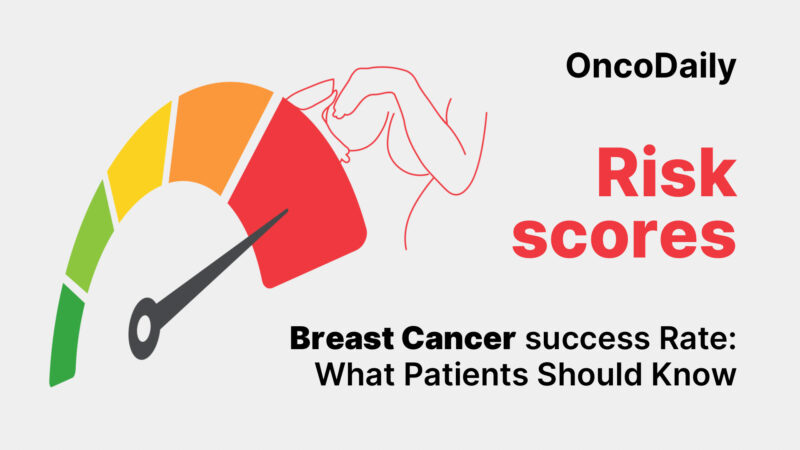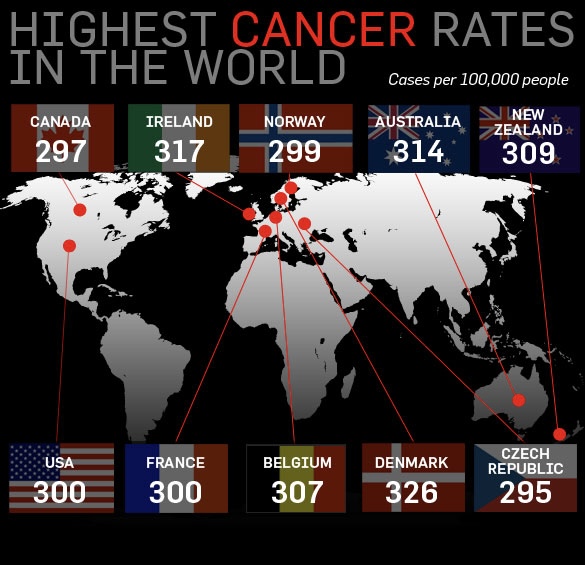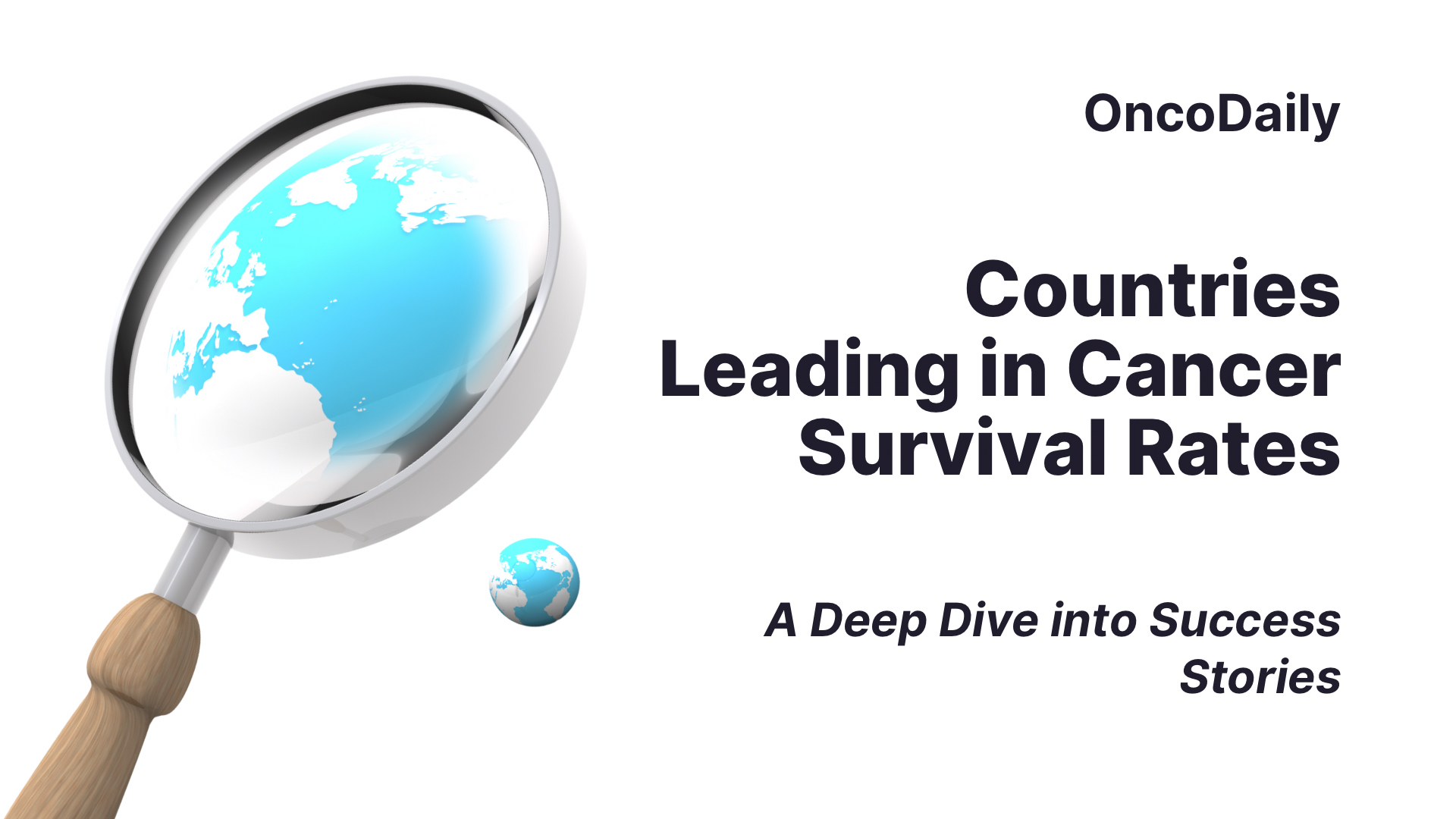Cancer continues to be one of the world’s most formidable health challenges. However, there are countries that have made significant progress in improving cancer survival rates. These nations have not only invested in cutting-edge treatments but also focused on early detection, prevention, and making healthcare more accessible. But what is it about these countries that sets them apart in the global fight against cancer? This article delves into the countries with the highest cancer survival rates, how they’ve achieved success, and what lessons can be learned from their approaches.
Australia: The Leader in Cancer Survival
Australia stands out as the leader in cancer survival, with an impressive 1,849.8 cancer survivors per 100,000 people, a figure that surpasses most countries. This success is not accidental; it is the result of a comprehensive approach that integrates early detection, advanced medical treatments, and a robust healthcare system.
One of the key factors behind Australia’s success is its national screening programs, which focus on cancers such as breast, colorectal, and cervical cancer. These programs are designed to detect cancers in their earliest, most treatable stages. Early detection is crucial because it allows for prompt intervention, which increases the chances of survival. For instance, Australia’s National Bowel Cancer Screening Program has played a significant role in reducing the mortality rates associated with colorectal cancer.
In addition to early detection, Australia has a healthcare system that ensures access to high-quality treatments. Australian hospitals and cancer centers offer patients access to the latest therapies, including chemotherapy, immunotherapy, and targeted therapies. The country’s involvement in clinical trials also provides cancer patients with access to cutting-edge treatments that may not be available in other countries (Wisevoter, 2025).
Australia’s success isn’t just in medical treatments; it’s also in prevention. The country has strong public health campaigns aimed at reducing cancer risk factors such as smoking and poor diet. For example, the Australian Government’s National Tobacco Campaign has significantly reduced smoking rates, which is directly linked to the country’s reduced lung cancer rates.
New Zealand: A Close Competitor
New Zealand, with 1,686.8 cancer survivors per 100,000 people, follows closely behind Australia. Much like its neighbor, New Zealand has strong early detection programs, particularly for breast and cervical cancers, which help catch cancers early when they are most treatable. The country also places a high emphasis on health equity, ensuring that people living in rural areas or from marginalized communities have access to cancer care. This focus on accessibility has contributed to New Zealand’s high cancer survival rates (Wisevoter, 2025).
New Zealand’s cancer control strategy is comprehensive, including public awareness campaigns, accessible treatment options, and a focus on lifestyle changes. The country’s approach to obesity prevention has been particularly effective, as obesity is a major risk factor for several types of cancer, including breast and colorectal cancer.
Ireland: Rising to the Challenge
Ireland, with 1,240.5 cancer survivors per 100,000, has also shown significant progress in cancer care. While it doesn’t have as high survival rates as Australia or New Zealand, the country’s improvement in recent years is noteworthy. Ireland’s healthcare system has made great strides in cancer treatment and early detection, particularly with the expansion of breast cancer screening and the introduction of national screening programs for colorectal cancer.
The country has also made major investments in cancer research. Institutes like the Irish Cancer Society have collaborated with global organizations to improve treatment outcomes and contribute to the development of novel therapies. Moreover, Ireland’s government is increasing its funding for public health initiatives to encourage healthier lifestyles and reduce cancer risk factors, particularly among its younger population.
United States: Innovation Meets Challenges
The United States, home to some of the world’s leading cancer research institutions, such as the National Cancer Institute (NCI), has made enormous strides in cancer treatment and innovation. Despite these advancements, the U.S. has faced challenges in achieving equal access to care. Still, with 1,195.7 cancer survivors per 100,000 people, the U.S. remains a leader in terms of treatment options and groundbreaking cancer therapies.
The U.S. is a pioneer in personalized medicine, where treatments are tailored to the genetic makeup of both the patient and the tumor. This has revolutionized cancer treatment, particularly in cancers like breast cancer, lung cancer, and melanoma. Additionally, the U.S. is leading the way in immunotherapy, which harnesses the body’s immune system to fight cancer.
However, one of the biggest challenges in the U.S. is the disparity in healthcare access. Patients in underserved areas, especially in rural or economically disadvantaged communities, often have less access to the cutting-edge treatments that could significantly improve their survival chances. This disparity in access is a major factor preventing the U.S. from achieving even higher cancer survival rates.
The Power of Early Detection: A Common Thread Among Leaders
When it comes to cancer survival, one of the most powerful tools in the arsenal of leading nations is early detection. Countries like Australia, New Zealand, Ireland, and the United States have made significant strides in increasing cancer survival rates, largely due to their emphasis on screening programs and early diagnosis. The earlier cancer is identified, the more treatable it becomes, and the higher the chances of a positive outcome. Let’s take a closer look at how early detection has become a pivotal factor for success in cancer care across the globe.
Australia’s Pioneering Screening Programs
Australia is a prime example of how early detection saves lives. The country has implemented national screening programs for some of the most prevalent cancers, including breast, cervical, and colorectal cancers. These programs are designed to catch cancers at the earliest possible stage, often before symptoms even appear. The National Bowel Cancer Screening Program alone has played a crucial role in reducing colorectal cancer deaths, and studies show a marked improvement in survival rates thanks to early identification and intervention.
For breast cancer, Australia’s BreastScreen Australia program ensures that women aged 50 to 74 undergo regular mammograms, significantly increasing the likelihood of detecting cancer when it is most treatable. This proactive approach has contributed to Australia’s position as a global leader in cancer survival rates.
New Zealand’s Comprehensive Early Detection Strategy
New Zealand has also embraced the power of early detection, with its own extensive screening programs that target breast, cervical, and colorectal cancers. The country’s National Cervical Screening Programme has been highly effective in reducing the incidence of cervical cancer through regular Pap tests, which can detect abnormal cells before they develop into cancer. This program, alongside the breast cancer screening initiative, has been integral in improving survival rates and reducing mortality for these two cancers.
New Zealand’s focus on health equity also ensures that vulnerable populations, such as Māori and Pacific communities, have access to screening services. The incorporation of culturally tailored outreach has helped bridge gaps in access to early cancer detection, ensuring that everyone in the population benefits from these life-saving programs.
Ireland’s Investment in Early Diagnosis
Ireland’s commitment to early detection is also noteworthy. The country has made great strides in cancer care, particularly through its cancer screening programs. Ireland’s BreastCheck program offers free breast cancer screening for women aged 50 to 69, and the CervicalCheck program provides screening for cervical cancer, helping to reduce both incidence and mortality rates. These programs have proven successful in diagnosing cancers early, which increases the chances of effective treatment.
Additionally, Ireland has invested in colorectal cancer screening for people aged 60 to 69. The emphasis on early detection for these cancers has contributed to the country’s improved survival rates and demonstrates Ireland’s focus on comprehensive cancer care.
United States: Advancing Early Detection Through Technology
The United States, with its advanced healthcare system and high levels of research funding, has made remarkable progress in early detection, particularly through technological advancements. The U.S. is home to state-of-the-art imaging technology and diagnostic tools that allow doctors to identify cancers at their earliest stages. Mammography, CT scans, and colonoscopy are widely used to detect breast, lung, and colorectal cancers, respectively.
Moreover, the U.S. has pioneered the use of liquid biopsy technology, which is a non-invasive method to detect cancer-related genetic mutations in blood samples. This breakthrough technology is enabling earlier detection of cancers such as lung and colorectal cancer, potentially before even the most sensitive imaging techniques can detect them.
Global Lessons: Why Early Detection Matters
The success of early detection in these leading countries demonstrates a fundamental truth: catching cancer early is key to saving lives. Screening programs offer the opportunity to identify cancers at stages when they are small, localized, and more responsive to treatment. Early intervention typically results in less aggressive treatment, fewer side effects, and improved overall outcomes.
Research has consistently shown that stage at diagnosis is one of the most important factors influencing cancer survival. For example, early-stage breast cancer has a five-year survival rate of over 90%, whereas survival rates for late-stage breast cancer are much lower. This disparity underscores the importance of early detection in improving survival outcomes.

Read More About Breast Cancer Success Rate on OncoDaily
In addition to improving survival rates, early detection is also cost-effective. Treating cancer in its early stages is less expensive than treating advanced stages, which often require more intensive treatments such as surgery, chemotherapy, and radiation. By catching cancer early, healthcare systems can reduce the financial burden on patients and the healthcare system as a whole.
Challenges in Implementing Early Detection Globally
While early detection has proven to be a game-changer, it’s not without its challenges. For one, not all countries have the infrastructure or resources to implement widespread screening programs. In many low- and middle-income countries, limited access to healthcare, lack of funding, and shortage of trained medical professionals make it difficult to offer routine screenings to the general population.
Moreover, even in high-income countries, healthcare disparities exist. People living in rural areas or from disadvantaged socio-economic backgrounds may face difficulties accessing screenings, leading to late diagnoses. Addressing these barriers is crucial in ensuring that early detection benefits all populations, regardless of geography or income level.
Why Do Countries with the Highest Cancer Survival Rates Also Have the Highest Cancer Incidence Rates?
Countries like Australia, New Zealand, Ireland, and the United States are known for having the highest cancer survival rates, but they also report some of the highest cancer incidence rates globally. At first glance, this may seem paradoxical—how can the countries with the most effective cancer treatments also have the highest rates of cancer diagnoses? The answer lies in a combination of advanced healthcare systems, aging populations, lifestyle factors, and early detection efforts that these nations prioritize.

A major factor contributing to high cancer rates in these countries is their highly advanced healthcare systems, which place a strong emphasis on early detection. These nations are leaders in implementing comprehensive screening programs for cancers such as breast, colorectal, and cervical cancer, which help catch cancers at their earliest, most treatable stages. Early detection directly contributes to the higher recorded cancer incidence, as cancers that might otherwise go unnoticed are identified and treated promptly. The increased ability to diagnose cancer early ensures that more people are identified as having cancer, raising the overall cancer incidence in these countries.
Another contributing factor is the aging populations in these countries. With longer life expectancies, more people are living to older ages, when cancer is more likely to develop. Cancer risk increases with age, and as populations in countries like the U.S., Australia, and New Zealand grow older, the likelihood of cancer diagnoses naturally rises. These countries also have better cancer registries and reporting systems, which help ensure that cancer cases are tracked more accurately compared to regions with less developed healthcare infrastructures. As a result, these nations report more cancer cases, reflecting their success in early diagnosis and better data collection, rather than a greater overall cancer risk.
Lifestyle and environmental factors also play a significant role in the high cancer rates seen in these countries. Factors such as tobacco use, poor diet, lack of physical activity, and exposure to ultraviolet (UV) radiation contribute to higher cancer rates. For example, Australia and New Zealand have high rates of melanoma due to intense UV radiation exposure, while the U.S. and Australia have seen historically high lung cancer rates, though smoking cessation programs have reduced these numbers in recent years. These countries are industrialized, which means their populations are often more exposed to environmental carcinogens, further contributing to cancer incidence.
Interestingly, these same factors contribute to high survival rates in these nations. The same countries with the highest cancer incidence also boast high survival rates because of their effective healthcare systems. The advancements in cancer treatments, including immunotherapy, targeted therapies, and personalized medicine, have significantly improved outcomes for cancer patients. Early detection programs help ensure that cancers are found at earlier, more treatable stages, which increases the chances of survival and decreases the need for aggressive treatments later on. These countries’ commitment to cancer research and treatment innovation means that when cancer is diagnosed, patients have access to cutting-edge therapies that improve their chances of survival.
Finally, increased awareness and reporting contribute to higher cancer incidence rates in these countries. With better cancer awareness, patients are more likely to seek medical care for symptoms that may have been ignored in regions with less healthcare access. As a result, cancer cases are more frequently reported and tracked, which further elevates the recorded incidence rates.
In conclusion, countries with high cancer survival rates, such as Australia, New Zealand, Ireland, and the United States, also have high cancer incidence rates because their healthcare systems are effective at detecting and treating cancer early. The combination of early detection, advanced treatments, aging populations, and lifestyle factors contribute to the higher number of diagnosed cases. However, this does not necessarily reflect a greater cancer risk but rather the success of healthcare systems in identifying and treating cancer early, ultimately leading to better patient outcomes and higher survival rates.
Key Takeaways: Lessons for the Global Cancer Care Community
The global fight against cancer has seen remarkable progress over the past few decades, thanks in large part to advancements in early detection, treatment innovations, and healthcare access. Countries with the highest cancer survival rates—such as Australia, New Zealand, Ireland, and the United States—offer valuable lessons that can guide global cancer care improvements. As we look toward a future where more lives can be saved, there are several key takeaways from these success stories that can benefit cancer patients, healthcare systems, and policymakers worldwide.
Innovative Treatments: The Critical Role of Targeted Therapies and Immunotherapy
Another major takeaway from high-survival countries is their early adoption of innovative treatments, including targeted therapies and immunotherapy. For example, Australia’s success in melanoma treatment can be attributed in part to cutting-edge immunotherapies like checkpoint inhibitors. Similarly, targeted therapies such as Herceptin for HER2-positive breast cancer and BRAF inhibitors for melanoma have revolutionized cancer treatment by offering more effective and less toxic alternatives to traditional chemotherapy.
These treatments have transformed the landscape of cancer care, offering hope to patients with cancers that were once considered nearly untreatable. Innovation in treatment must remain a priority for the global cancer care community. This includes ensuring that innovative therapies are not just available in wealthy countries, but accessible to all populations. Affordable access to cutting-edge treatments is crucial for improving cancer outcomes worldwide.
Equitable Access to Healthcare: Addressing Global Disparities
While advanced treatments and early detection programs are essential, access to healthcare remains one of the biggest barriers to improving global cancer survival rates. In the United States, despite the availability of the latest treatments, healthcare disparities prevent certain groups, particularly those in rural or low-income areas, from benefiting from these advances. Similarly, in many parts of the world, especially low- and middle-income countries, limited access to both early detection and modern treatments significantly impacts survival.
The key lesson here is the importance of healthcare equity. Ensuring that all individuals, regardless of their socioeconomic status or geographic location, have access to the resources they need for early detection, treatment, and follow-up care is essential to improving survival rates. Expanding universal healthcare and providing financial support for cancer treatments can help reduce inequalities in cancer care.
The Importance of Public Health Campaigns: Prevention and Education
Preventing cancer is as important as treating it, and countries with high survival rates have made significant strides in public health campaigns aimed at reducing cancer risk factors. Australia’s successful anti-smoking initiatives have led to a significant decrease in lung cancer rates, and New Zealand’s efforts to reduce obesity—a key cancer risk factor—have contributed to improved health outcomes.
These public health strategies should be a priority for the global community. Governments must invest in educational campaigns that promote healthier lifestyles, reduce exposure to carcinogens, and encourage routine cancer screenings. Prevention not only reduces the overall burden of cancer but also contributes to lower healthcare costs and better patient outcomes.
Investing in Cancer Research: The Path to Long-Term Solutions
Cancer research has been a cornerstone of progress in the fight against cancer. Countries with high cancer survival rates prioritize research in both basic science and clinical trials. The United States, for example, is home to some of the world’s leading cancer research institutions, like the National Cancer Institute (NCI), and invests heavily in the development of new treatments, including immunotherapies, targeted therapies, and precision medicine.
Research should remain a global priority. As more discoveries are made, we have the potential to understand cancer more deeply and create more effective, personalized treatments. Global collaboration in cancer research is key to accelerating progress. By pooling resources, expertise, and data, countries can work together to overcome the challenges posed by cancer and find better solutions for treatment and prevention.
Strengthening the Cancer Care Workforce: Training and Support
High cancer survival rates also rely on a well-trained and supported oncology workforce. Countries with effective cancer care systems have invested in training oncologists, nurses, radiologists, and other healthcare professionals who specialize in cancer treatment. For example, Australia has a robust network of cancer specialists and support staff who are equipped with the knowledge and tools to deliver high-quality care.
Building a strong oncology workforce in every country is critical. This involves training medical professionals not only in the latest treatment techniques but also in communication and patient care. Ensuring that healthcare providers are equipped with the right skills can improve the quality of cancer care and enhance the overall patient experience.
Global Collaboration: Sharing Knowledge and Best Practices
One of the most important lessons from countries with high cancer survival rates is the value of global collaboration. While individual countries can make great strides in cancer care, the global community must work together to share knowledge, research, and best practices. Countries with strong cancer care systems can support those with less developed infrastructures by offering training programs, shared research, and international partnerships.
International collaboration can help identify effective strategies, share resources, and improve access to the latest treatments. This global effort will be key in addressing the growing cancer burden and ensuring that progress is made in every corner of the world.

Read More About AI in Oncology on OncoDaily
A Collective Effort for a Brighter Future
The lessons learned from countries with high cancer survival rates offer a clear roadmap for improving cancer care worldwide. By focusing on early detection, innovative treatments, equitable access to healthcare, and public health initiatives, we can make significant strides in reducing cancer mortality rates globally. The fight against cancer requires a collaborative effort, and by sharing resources, research, and expertise, we can ensure that every patient, regardless of where they live, has the best chance of survival.
You Can Watch More on OncoDaily Youtube TV
Written by Armen Gevorgyan, MD
